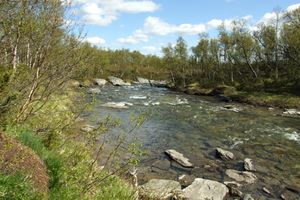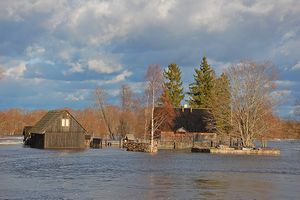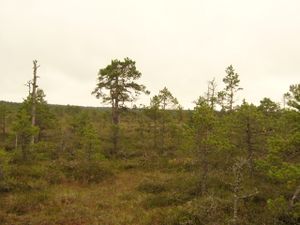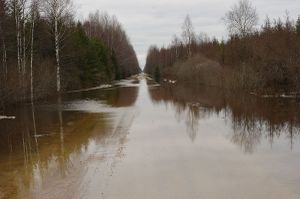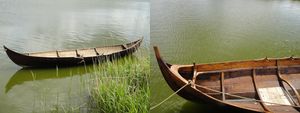Ghaklmbu
Ghaklmbu (IPA: /ghɐkɭmβɯ/) is one of the fifteen states of Gfiewistan. It gets its name from Old Gfiewish ‘g’ at, ‘hak’, holy, ‘lm’, the archaic augmentative suffix and ‘bu’, place. It is located in central Gfiewistan, and is the only state surrounded wholly by other states, having no international borders. It borders the state of Tanla in the north, the state of Twilm in the east and southeast, the state of Hemmswill in the south and the state of Osjer in the southwest and west. Alongside Tanla, the state of Fojsatan and the state of Wrofatan it is usually seen as being part of the heartland of Gfiewistan.
Geography
Farmland dominates much of Ghaklmbu, especially in the west, but exists to an extent in the more eastern regions of the state as well. The center is however mostly home to wide stretches of forestland, with smaller patches of forests found in the more western and eastern parts of the state, whereas the east of Ghaklmbu is characterized by large raised bogs, flood plain grassland and a meandering river landscape.
Rivers
Ghaklmbu is home to two drainage basins. The first one is located in the north and west of the state and feeds the river Hewo (/hɛʍo/. name from an unknown word in a substrate language), while the southeastern one feeds two tributaries of the Takenfa, the Lausrf (/ɭɐɯʂɹf/, from ‘lausr’, wave and ‘rf’, creek) and the Bofoxiwjed (/βofoxɪʍʝəd/, name from ‘bofox’ silence, emptiness + ‘wjed’ river). Both rivers, but especially the Bofoxiwjed regularly flood the surrounding landscape in the early spring, as seasonal heavy rains combined with spring thaws can flood the grasslands, streets and even entire villages. The area forms a Gfiewish Heritage Area which protects local ecosystems and traditional ways of living.
Economy
Due to historically being further away from all major trade routes and therefore being rather disconnected from the remaining country, the state never became very wealthy and saw little development, even with the advent of the railway that saw the state capital Gordxersma (/goɹdxəɹʂma/, "at the bright frogs") become a major crossing point and transfer hub for various railway lines, as they were all owned and controlled by companies from other states.
As a result, in principle little has changed in the past centuries. The economy of the state is still predominantly agricultural, and to a much smaller extent pastoral. The sector has been only cautiously modernized, due to little capital existing for mechanization and industrialization and state laws blocking most out-of-state investors. Trucking companies, river fishing and foraging in forests are of importance as well, with the products and services also often offered in the surrounding states and some larger cities.
Forestry is due to strict logging regulations almost non-existent, especially in the bogs and bog forests of the Heritage Area, where development and economic activity in general are significantly curtailed if not established by traditional precedent, such as the gathering of berries and mushrooms. Instead, in recent times a cottage industry of tourism has managed to establish itself, providing accommodation and organizing tours that capitalize on the growing interest in local non-traditional tourism destinations and sustainable traveling.
Culture
This remote and often isolated existence has also contributed to some old rites and traditions being kept alive that have disappeared in other parts of the country, especially in the eastern part of the state. These include for example burials in bogs, featuring elaborate processions and chanting, reflected in local myths such as Bog brother is watching you.
Such rites and beliefs historically formed one of the most important aspects of Piir, the pre-Iovist indigenous religion of Gfiewistan. Although Ghaklmbu was nominally converted to Iovism more than 450 years ago, the ancient rite was reinterpreted and maintained, with all historical attempts by the Iovist temples to end the practice failing. Bog burials are still common in the state, as well as in neighboring regions such as the north of Twilm, the non-urban regions of Kauslat and Tanla, although they used to be much more widespread prior to the arrival of Iovism.
Aside from being religiously important as well as being a destination of trips for other cultural activities and local recreation, this has made the bogs of Ghaklmbu more recently become a place of interest for tourists, anthropologists and archeologists, as they provide a window into the past, showing parts of life how it might have been 1000 years, 2,000 years or even longer ago.
Other parts of the culture, such as town and village fairs are also generally held near the water, and involve many activities on or close to it, such as boat races, competitive fishing, net-making and fixing as well as boat workshops. Festive meals typically include fish in some way, too, seasoned with berries, such as cloudberries, gathered in forests and raised bogs.
Over the centuries, this has attracted many writers, poets and painters, who came to let the unique landscape inspire them, and more recently it has been another factor that led to the growing influx of tourists from all over Gfiewistan and other Ystelian countries.
Demographics
With a population of 107,448 people, Ghaklmbu is ranked 8th among the 15 states of Gfiewistan, putting it solidly in the middle. However, the state is experiencing the biggest population loss of all states due to having the second biggest emigration rate following Galsnio and the second smallest immigration rate after Wrofatan. Furthermore, while the birth rate is the largest in the entire country, the death rate is also the third highest, following Siortan and Galsnio.
As in the remainder of Gfiewistan, urbanization is high, although in comparison to other states not particularly so, with about 78 % living in towns. The biggest is the state capital Gordxersma, which has 35,328 people. Other towns of note are Fojsago (/foʝəʂago/, 11,731 people, from ‘fojsa’, sheep and ‘go’, farm) and Boforf (/βoʷoɹf/, 8,096 people, from ‘bofoxs’ silent and ‘rf’ creek).
Transport
The Hatariew-Slakkariew/Dillariewis railways split in Gordxersma, making it one of two still existing exchange stations in Gfiewistan. The highway system bypasses Ghaklmbu, so access by road to other states and towns is mostly done via the secondary roads in the direction of Weishriew and the states of Tanla and Osjer.
The western part of the state is poorly connected with streets owing to the land being very marshy, and as a result the Bofoxiwjed is the most important connection to the outside world for inhabitants of the town of Sfirf and smaller villages, and there is a long tradition of boat-building for the warmer months and sled-building for when the river is frozen. However, nowadays boats from all over the world can be found in the region, and a regular ferry connection to the capital of Twilm, Ejodfatel has existed since 1892.
Aside from passengers and fishers the boats are also used by traders. In fact, goods and mail both leave and enter the “wet region” primarily this way, too. Markets are therefore usually held right next to piers, or in some smaller villages itinerant merchants right from their boat. Doctors, pharmacists and librarians likewise have to paddle up and down the river to reach those as the ferry only stops at the town of Sfirf.
